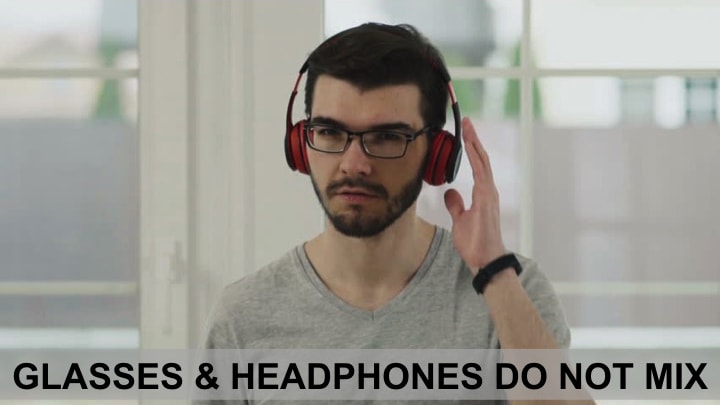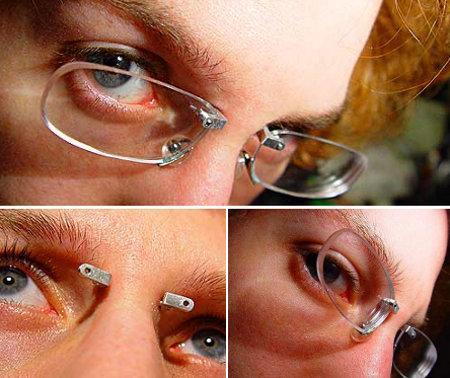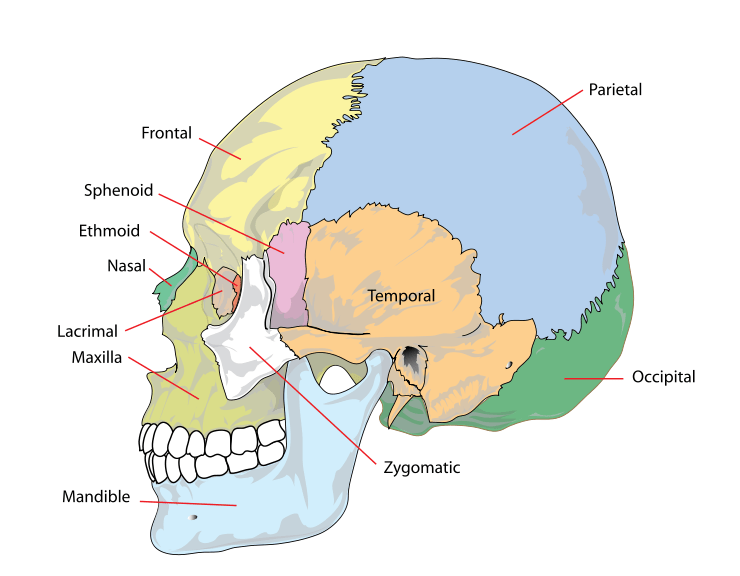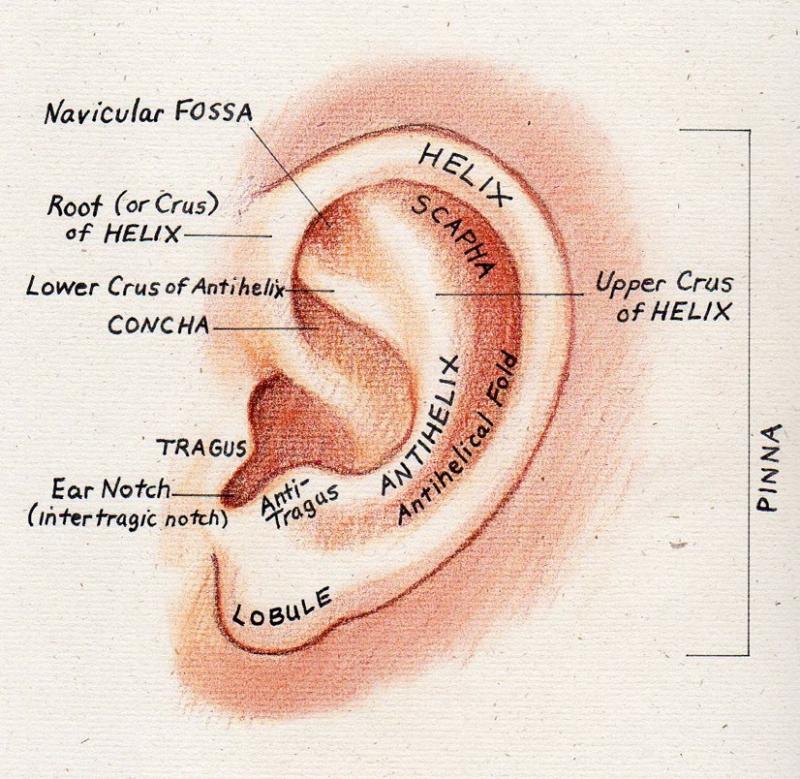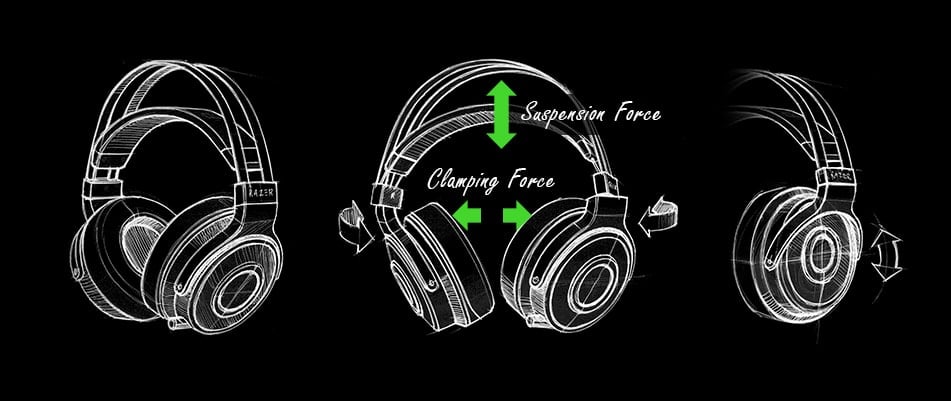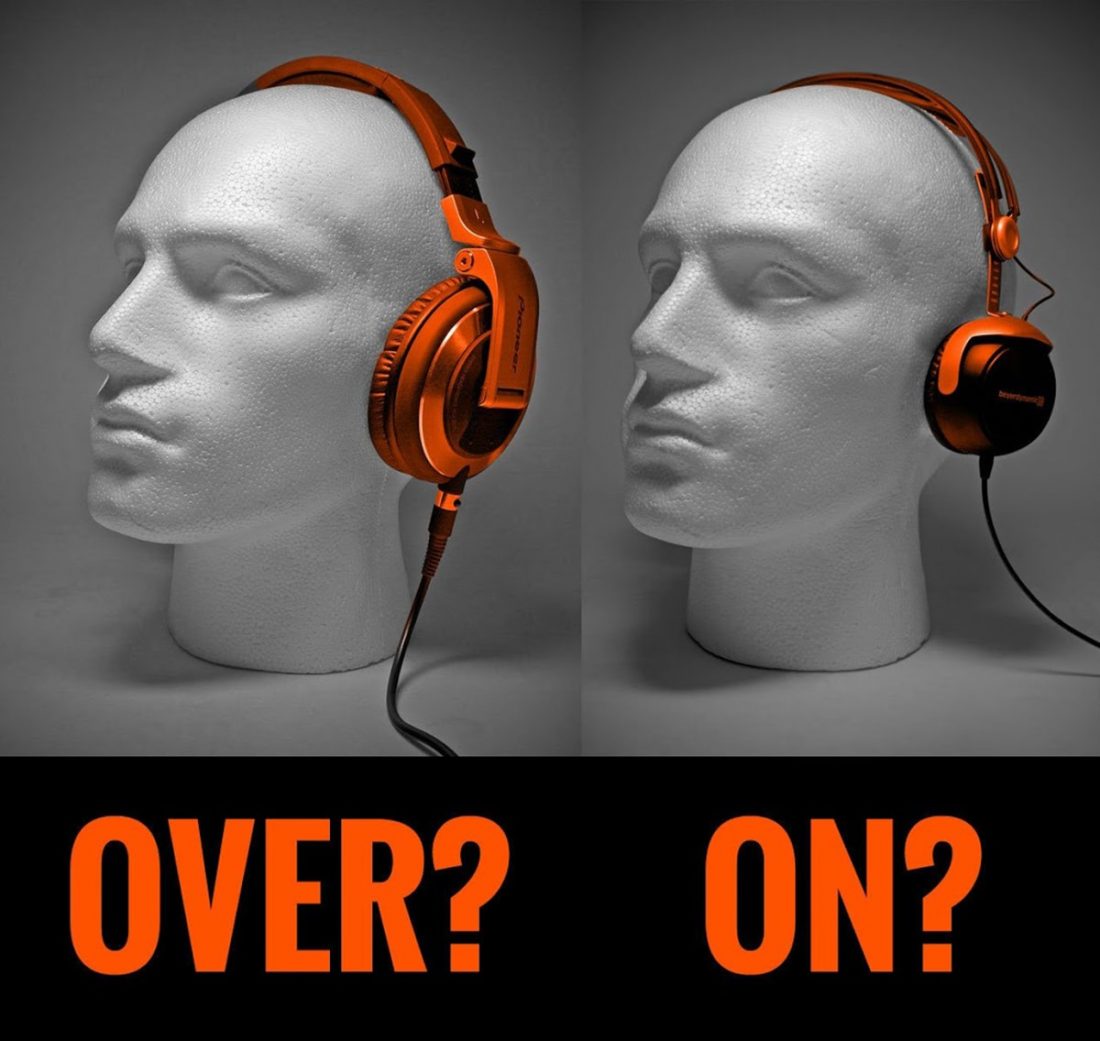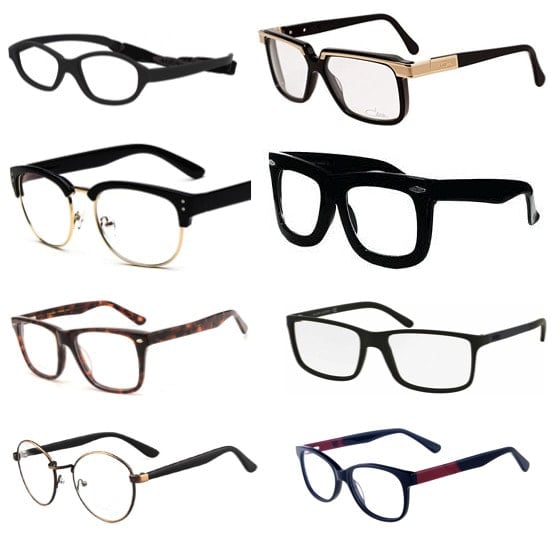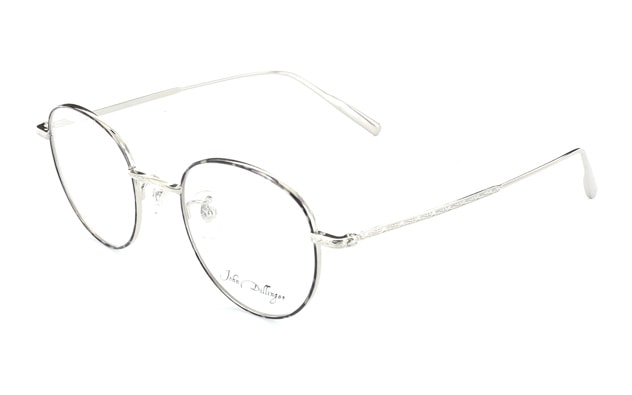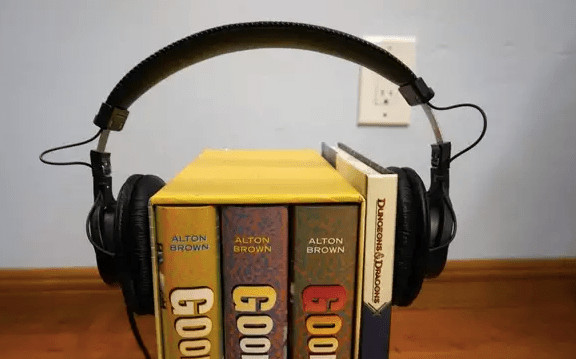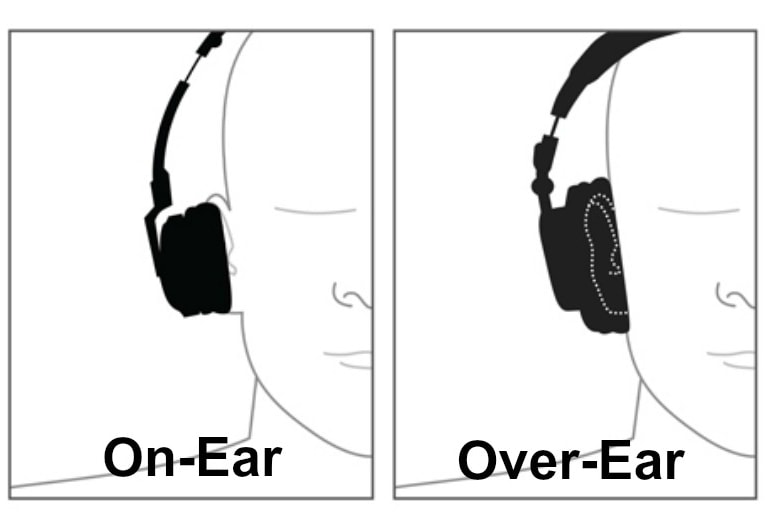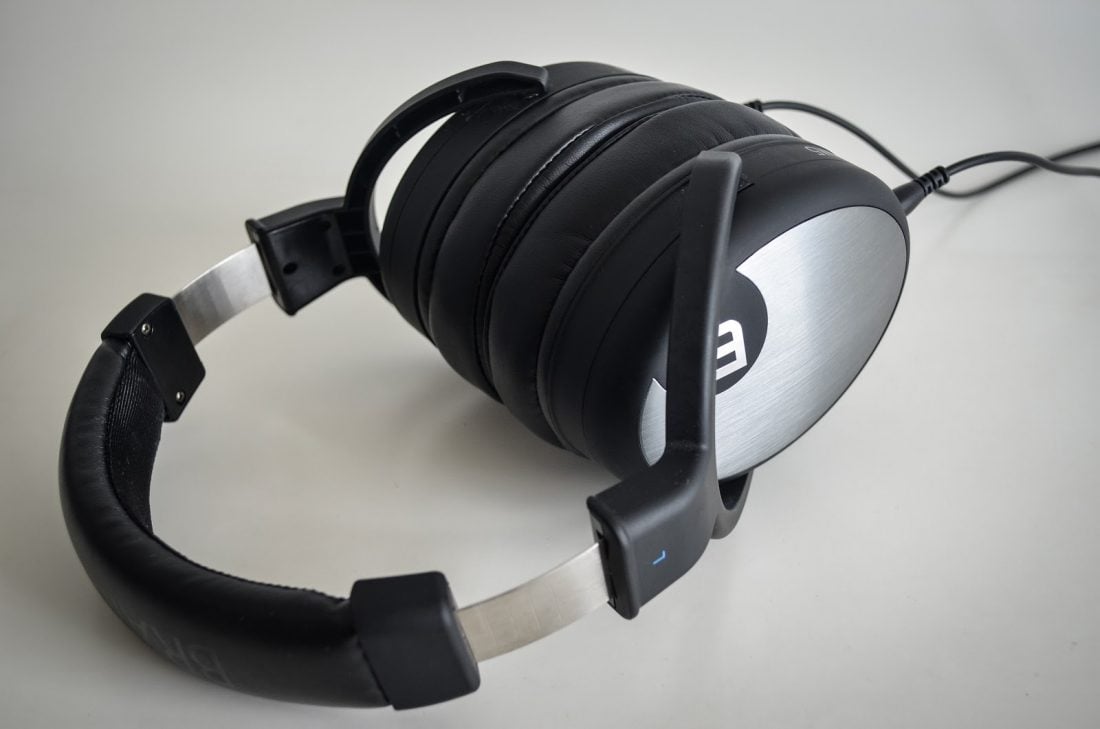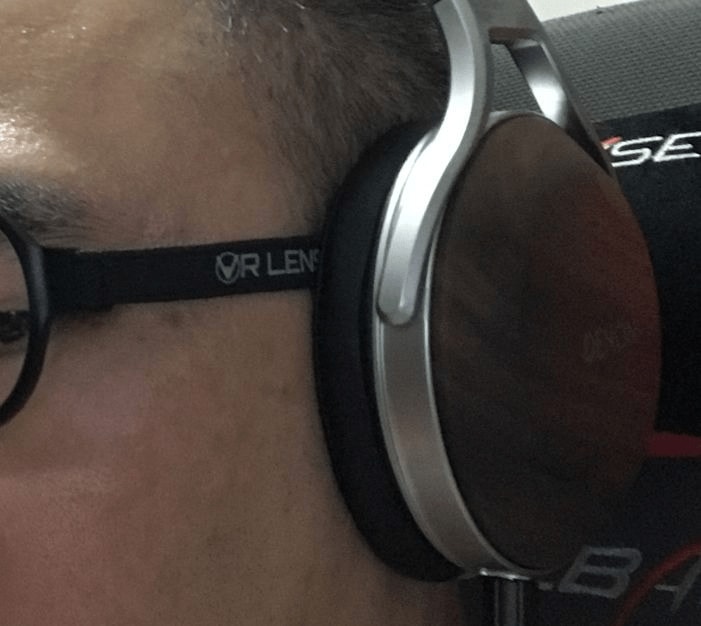However, just like in the cooking world, where there are plenty of emulsifying techniques to bring the oil and water together, there are solutions that can help you mitigate the discomfort from wearing glasses with headphones to a more tolerable level.
We will first talk about the science and causes behind the pain before diving into the solutions. But not to fret, pierced glasses are not included in the list. What a way of using pain to counter pain!
Types of Discomforts
First, we want to understand the different type of discomfort that one had to endure after a prolonged period of wearing glasses with headphones. They are, but not limited to, the following:
Headaches due to the pressure felt at the temporal bone; Sore ear cartilage or auricular chondritis due to pressure from prolonged wearing of both items together
Why Does Wearing Glasses with Headphones Hurts?
So here comes the million dollar question – why are discomforts often experienced after a prolonged period of wearing both the headphones and glasses together? Just like fingerprints, the human ear is also unique to the individual. This is also the key reason why there aren’t any one-size-fits-all headphones that are available in the marketplace that has catered to everyone’s needs.
Ergonomics That Affects Comfort
The following are some of the factors that have been identified to have attributed to the discomforts experienced: Jony Ive, Chief Design Officer of Apple
Clamping Force of The Headphones Materials and Thickness of the Ear Padding Types of Headphones Glasses Design
Clamping Force of The Headphones
The strength of the clamping force of headphones is what secures and snugs the headphones to your head. It also plays a role in determining the functional performance of the headphones, i.e. sound quality, the extent of noise cancellation and wearing security. If the clamping force is too weak, the headphones would have a higher risk of falling off from the head with any sudden change in movement, such as a turn of the head. However, if the clamping force of the headphones is too strong, it would put on more pressure on the ear cartilage and temporal bones, which would then lead to headaches and/or ear soreness. The pressure experienced by bespectacled users would be further intensified as additional pressure would be felt on the ears cartilage and temporal bones due the burrowing of the glasses frames on the scalp of the head.
Material and Thickness of Ear Padding
The type of material that is used for your headphones ear cushion, as well as the adequacy of the ear cushion padding, does affect the comfortability of the wearing experience to a great extent. The ear cushion acts as the buffer for your ears from the clamping force of the headphones. The most common type of materials used for headphones ear cushions are:
Foam Leather Velour Pleather
Leather and pleather ear cushions are often harder in terms of cushioning as compared to foam and velour one. The material used for and the thickness of the ear cushion, however, often comes at a trade-off between comfortability and sound quality. If the material used is not suitable for you and/or the paddings are too thin, the pressure that would be exerted onto your ear cartilage and temporal bone might then be intensified as there would be less cushioning to buffer the clamping force. However, the preference on the type of material used for headphones ear cushion and the thickness is highly subjective to each user. While some might prefer gel-infused memory foam ear cushion, others might not due to the additional weight added to the headphones.
Types of headphones
There are two types of headphones that have comfort issues while wearing them with glasses. They both use a band that goes over the head to hold the ear cups in position:
Supra-aural headphones (on-ear) Circumaural headphones (over-ear)
On-ear headphones tend to be smaller in size, with the ear cushions resting on the user’s ears, whereas over-ear headphones are usually larger in size, with the ear padding resting over the user’s ears. It is also worth noting that the weight of on-ear headphones tends to be lighter than over-ear. This might affect the clamping force with the latter. It often has a stronger clamping force to distribute the weight of the headphones more evenly across the head. Thus, the type of headphones affects both the position of the pressure point and the extent of the clamping force.
Glasses Design
Lastly, the design of the glasses does affect the wearing experience of the users. Glasses, nowadays, are made from a variety of materials, such as metal, plastic, and rubber. It also comes in different thickness and height of frames for consumers to choose from.
How Can We Reduce The Discomfort?
Here are some of the ways you can try to reduce the discomfort:
Getting Glasses With Thinner Frames Stretch Your Headphones Out to Reduce The Clamping Force Choose Over-Ear Headphones The Thicker The Better – Ear Paddings
Getting Glasses With Thinner Frames
Wearing headphones generally would be more comfortable with thinner-framed glasses than thicker ones.
With thinner frames, the surface area of the frames that would be pressed against the scalp would be smaller as compared to thicker ones, which in turn would reduce the pressure experienced on the temporal bone and ear cartilage. This solution may not be the most convenient for those who are unwilling to buy a new pair of glasses. However, if you are planning to purchase a pair in the near future, you should take this into consideration.
Stretch Your Headphones Out to Reduce The Clamping Force
If your current headphones’ clamping force is too strong for your comfort, you might want to consider stretching out your headphones. The most commonly tried method is to stretch your headphones over some books so as to loosen the clamping force. However, please proceed with caution with this method as you surely do not want to end up with broken headphones due to overstretching.
Choose Over-Ear Headphones
It has been widely shared in forums and blogs that over-ear headphones tend to be more comfortable as compared to on-ear ones, especially so for bespectacled users. This phenomenon is largely due to the fact that the ear paddings of the over-ear headphones encompass the circumference of the ears instead of pressing against the ears. Thus, there would be reduced pressure exerted onto the temporal bone and ear cartilage. However, as mentioned above, over-ear headphones tend to be heavier than on-ear ones. Hence, the clamping force of the headphones would be much stronger for the former. This might counter the relief in pressure that comes from the change in pressure point from on-ear headphones. It is good to take note of this when purchasing over-ear headphones.
The Thicker The Better – Ear Paddings
When it comes to ear paddings, always follow this rule – the thicker the better. With thicker ear cushions, there will be an increased level of buffer for the pressure from the clamping force of the headphones to be spread across before reaching you. There are variations of ear cushions for users with different needs. We personally prefer ear cushions that are made from foam, especially memory foam as they have the ability in remembering the shape of your ear, thus, ensuring a good fit every time you wear it.
Unorthodox Solutions
If the above methods did not aid you at all in alleviating the discomforts, you could also try the following, slightly unorthodox, methods:
Cutting a Gap Through The Ear Cushion Purchase a Virtual Reality (VR) Frames Try Wearing Pince-nez Glasses
Cutting a Gap Through The Ear Cushion
If you are currently holding on to an over-ear headphone, you might want to consider in following what Whitson Gordon, author of Popular Science, did – making the headphones accommodate to you instead of you to it. He basically cut a hole through his ear paddings where the frame of his glasses sits. It is a brute force method to reduce the amount of pressure exerted on the frame.
Purchase a Virtual Reality (VR) Frames
Why not get rid of glasses frames all together? With a pair of VR Frames, you would no longer feel the additional pressure due to your frames with headphones again. Being lightweight and simple to use, VR Frames has proved itself to be a viable option, provided you are comfortable with its aesthetics.
Try Wearing Pince-nez Glasses
Lastly, you might also want to consider the option of wearing a pair of vintage Pince-nez glasses. The Pince-nez is an iconic pair of glasses that stay on without the use of stems. It rests on the bridge of your nose, making it convenient to wear with headphones. Just like the VR Frames, the Pince-nez offers an interesting alternative to conventional glasses if headphones are to be worn.
Conclusion
It is always good practice to try out the headphones physically before the purchase. This gives ample opportunity for you to gauge the level of comfort it provides with glasses in the mix. Although you can never eliminate the discomfort, we have listed a couple of solutions to mitigate it to a more tolerable level. Just like emulsion, we bring both the headphones and glasses to work together in a cohesive manner. If you have a great technique that can improve the comfort of wearing glasses with headphones, tell us in the comments below!
